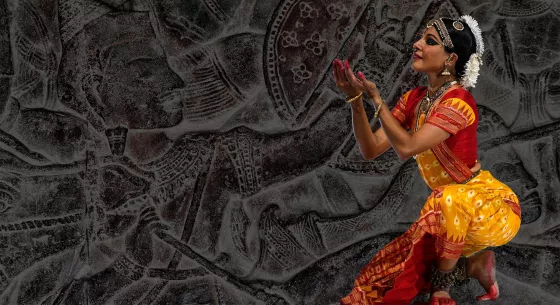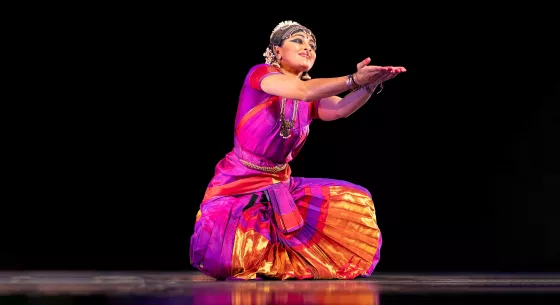
Ragamala Dance Company will captivate audiences on Nov 2 with the world premiere of Children of Dharma, a Northrop Centennial Commission. The work beautifully reinterprets the ancient Indian story of The Mahabharata. Take a closer look at this remarkable dance piece and the company behind it.

The Ramaswamys in their south Minneapolis dance studio. Photo by Graham Tolbert.
Mother-Daughter Dance
Exploring History, Humanity, and Dharma
Appreciation of Age and Experience

Ranee Ramaswamy. Photo by Grant Halverson, courtesy of the artist.
Experts in Eye/Hand Coordination

From left: Ashwini Ramaswamy, Aparna Ramaswamy, and Ramya Kapadia in Fires of Varanasi at the Joyce Theater. Photo by Steven Pisano.

